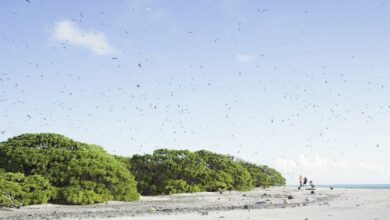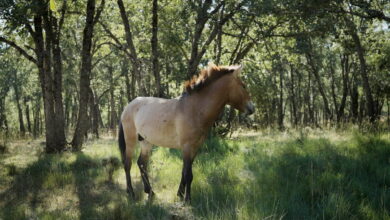
Neela Hauz Biodiversity Park, a restored wetland near Sanjay Van, serves as a thriving habitat for migratory birds. Image Credit: Nidhi Jamwal
Environment IndiaHere, Degraded Lands Become Biodiversity Parks
Delhi, India, has restored degraded lands into seven biodiversity parks, supporting native flora and fauna and providing myriad ecological benefits.
“Delhi has numerous open and degraded spaces that can be redeveloped, restored, and interconnected to deliver benefits like groundwater recharge, flood mitigation, and even wastewater treatment,” says Ashkay Kaul, a New Delhi-based specialist in ecological planning and sustainable architecture.
Urban biodiversity parks are defined as areas that feature hundreds of native plants, animals, and microbial species living in sustainable biological communities within a larger metropolitan area. Delhi has worked to transform former mining pits, sewage dumps, and scrublands into thriving, biodiverse spaces. Now, the capital has 820 hectares of biodiversity park space, making it one of the most impressive in the world in terms of surface area. The Ministry of Environment has even launched a national plan to help fund the creation of more biodiversity parks across India, emphasising the inspiring course that Delhi took to rebuild the capital with green space.



